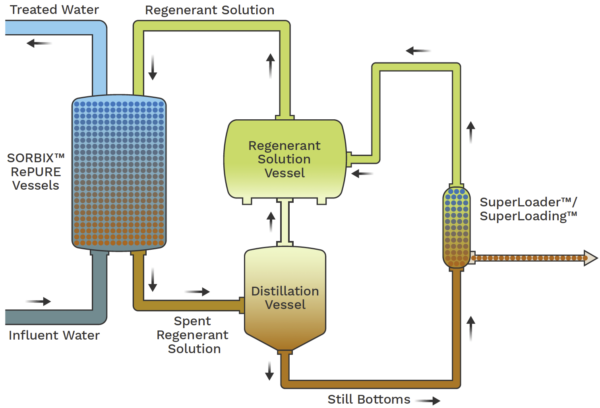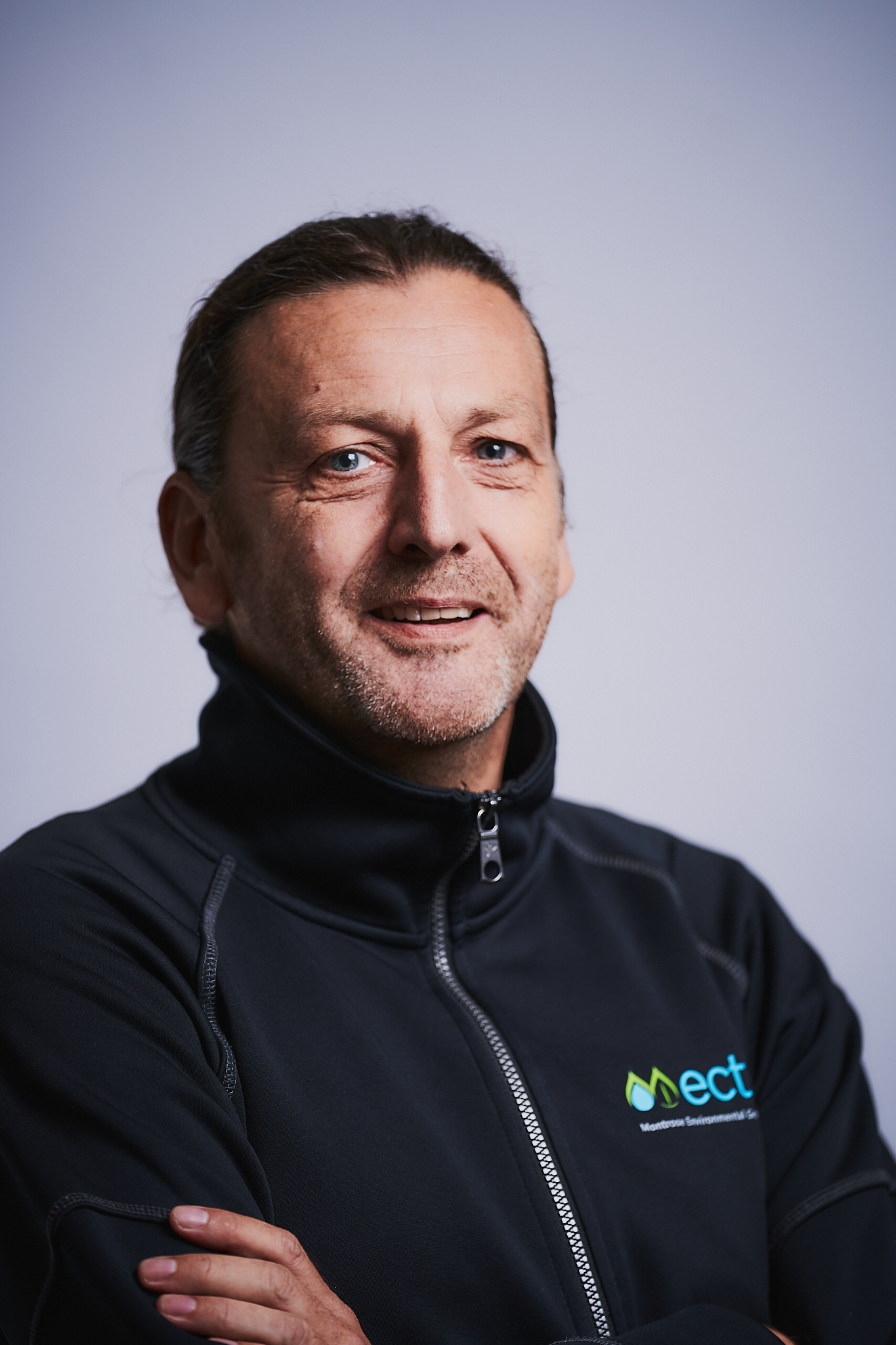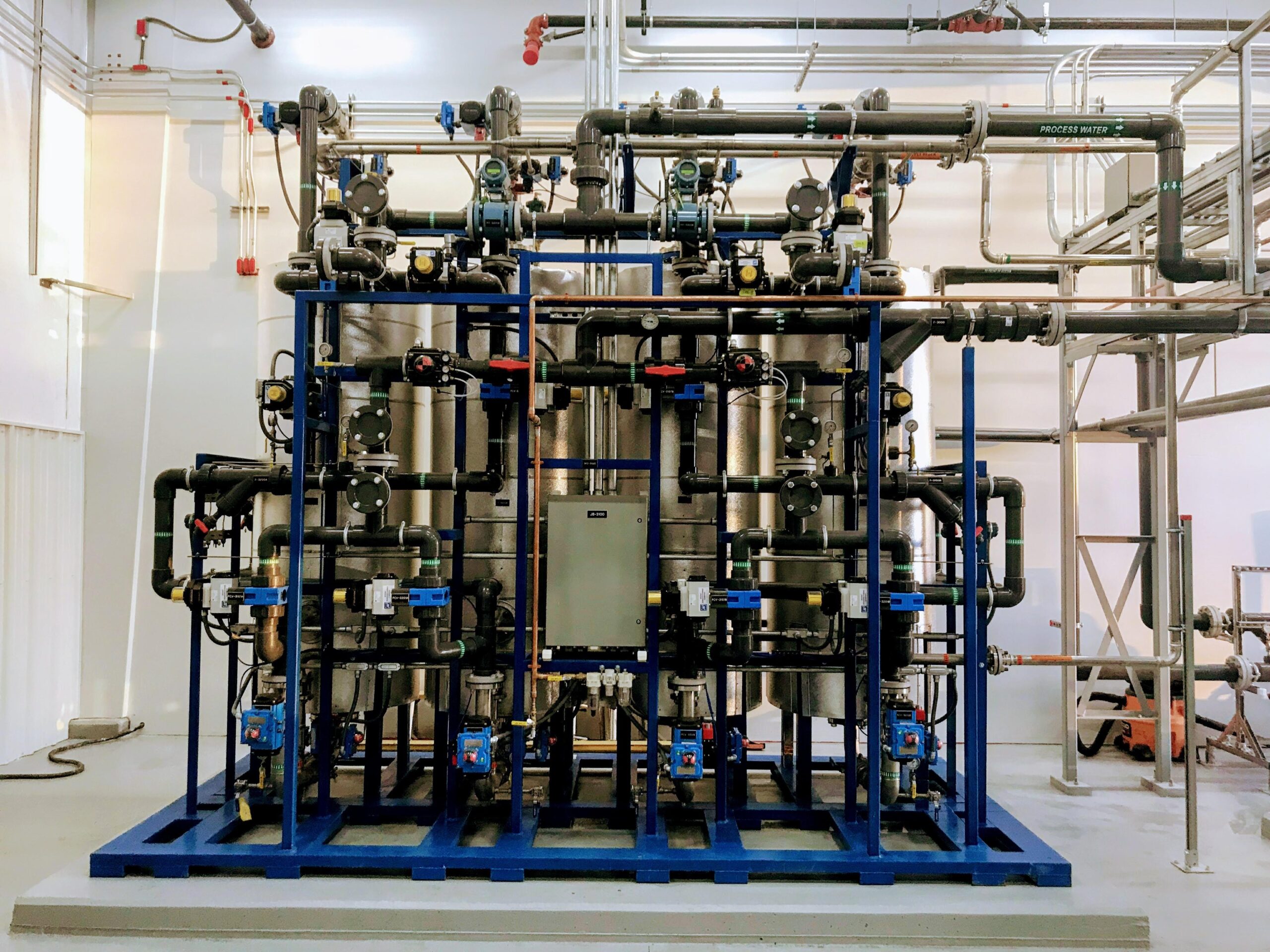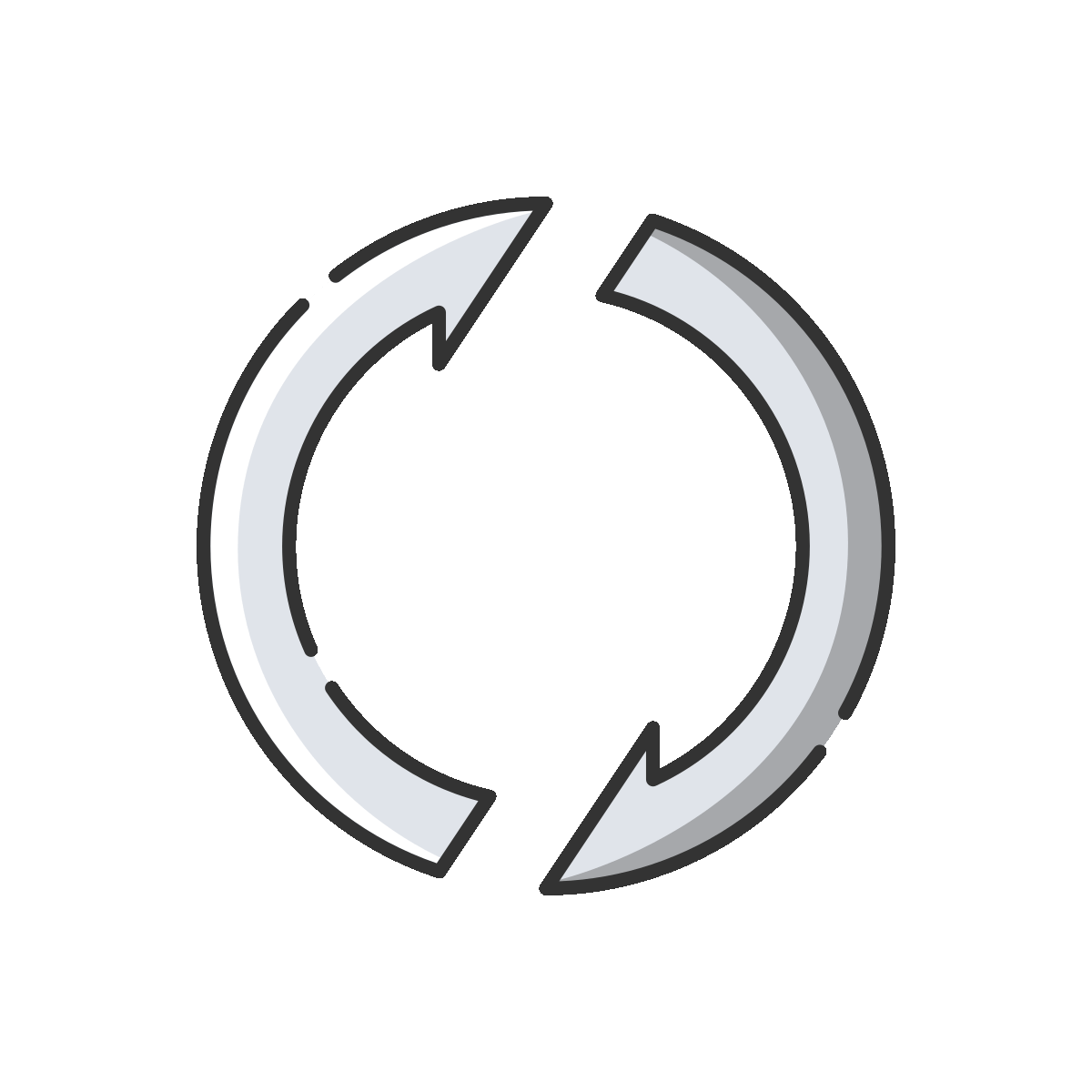How do you keep costs and waste to an absolute minimum when treating PFAS-contaminated water on a continuous basis? This video shows how our SORBIX™ RePURE ion exchange system makes this possible:
How does it work?
As with our SORBIX™ PURE ion exchange system, the SORBIX™ RePURE process begins with soaking special plastic beads called “resin” in salt water, so that chloride ions attach themselves to the positively charged nitrogen ions in the resin. Then, when you add your PFAS-contaminated water, the PFAS ions displace these chloride ions. The result is that your PFAS is attached to the resin instead of floating in the surrounding water. The technology attracts and traps all these molecules so the system can let clean water flow through.

With SORBIX™ RePURE there are a couple of subsequent steps, which dramatically reduce your operating costs:
- First, you “regenerate” the ion exchange resin. Using a solution of salt and solvent to remove the PFAS from the resin allows you to use the same resin all over again many times. This means you don’t have to keep buying and destroying new resin after every single use.
- Then, after regenerating the resin, your PFAS-laden regenerant solution is processed through ECT2’s distillation and SuperLoading™ process, reducing waste generation by orders of magnitude.
Our patented system
The SORBIX™ RePURE system from ECT2 is the only regenerable ion exchange system for PFAS available on the market. We have patents and pending applications for regeneration of resins that have been used to remove PFAS from water, and have deployed this technology in multiple full-scale projects around the world.
 Connect with a PFAS expert
Connect with a PFAS expert
For our customers in Europe, we are now taking this idea a step further and are looking to establish a central regeneration system that through economies of scale will lower these costs even further.
If you would like to explore your own options, to test the effectiveness of different technologies on your own water, or just to learn more, then please use the contact form below.
Additional resources
Regeneration Q&A
Read this, if you haven’t already, to learn more about this technology and what the Flanders report has to say about it.
Read Q&A
SORBIX™ RePURE product sheet
A short description of our regenerable ion exchange system for you to share with your PFAS project team.
Download PDF
Case study:
RAAF Base Williamtown Moors Drain
This high-capacity SORBIX™ RePURE regenerable ion exchange system is removing PFOS, PFHxS, PFOA and other compounds, reducing costs and minimizing downtime.
Read case study
Case study:
United States Air Force Civil Engineering Center
Our proprietary SORBIX™ RePURE system is achieving excellent results in removing PFAS and minimizing waste, consistently achieving non-detect results.
Read case study

